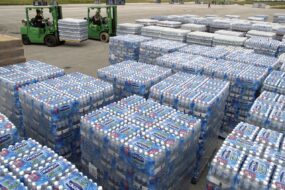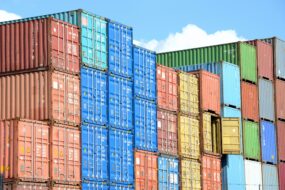Contents

Reefer containers, or refrigerated containers, are specialized shipping containers used for the transportation of temperature-sensitive goods. These containers are essential in ensuring the quality and safety of perishable products such as fruits, vegetables, pharmaceuticals, and other goods that require a specific temperature range during transportation.
In this blog, we will discuss everything you need to know about reefers, including:
- Types of refrigerated containers
- Reefer components
- Operating and maintenance procedures
- Regulations and standards
- Challenges and opportunities in the industry
Importance of Reefers in the Transportation of Temperature-Sensitive Goods
Reefers play a vital role in the transportation of temperature-sensitive goods. Without them, the quality and safety of perishable products could be compromised, leading to spoilage and economic losses.
By providing a controlled environment, reefers ensure that products maintain their freshness and quality during transportation, thereby increasing their shelf life and value. This is particularly crucial for goods that require a specific temperature range to remain effective, such as vaccines and other pharmaceutical products.
Brief History of Reefers
The use of refrigeration in transportation dates back to the mid-19th century when ice was used to preserve perishable goods during transport. However, the modern refrigerated container was developed in the 1950s by the American engineer Frederick McKinley Jones. Since then, reefers have evolved to become more efficient and reliable, with advanced technology that ensures accurate temperature control and monitoring during transportation.
Types of Reefers
Trailer Reefers
Trailer reefers are refrigerated containers that are attached to a trailer for transportation on land. They are commonly used for transporting perishable products such as fruits, vegetables, and frozen goods over short and medium distances.
Truck-Mounted Reefers
Truck-mounted reefers are smaller refrigerated containers that are mounted on trucks for transportation. They are commonly used for the transportation of smaller quantities of temperature-sensitive goods over short distances.
Railcar Reefers
Railcar reefers are refrigerated containers that are mounted on railcars for transportation. They are commonly used for the transportation of larger quantities of temperature-sensitive goods over longer distances.
Marine Reefers
Marine reefers are refrigerated containers that are used for the transportation of temperature-sensitive goods by sea. They are commonly used for the transportation of perishable products such as fruits, vegetables, and meat.
Components of Reefers
Refrigeration Unit
The refrigeration unit is the most critical component of a reefer container. It is responsible for maintaining the required temperature range during transportation. The unit uses a refrigerant to absorb heat from the container and expel it outside, thereby cooling the container.
Insulation
The insulation system is responsible for keeping the container’s interior temperature stable by reducing heat transfer between the container’s interior and exterior. The insulation is usually made of high-density polyurethane foam, which is a good insulator.
Air Circulation System
The air circulation system is responsible for ensuring that the cooled air is evenly distributed throughout the container. It consists of fans that circulate the air and ducts that direct the air to the different parts of the container.
Temperature Control System
The temperature control system is responsible for monitoring and controlling the temperature inside the container. It consists of temperature sensors, controllers, and alarms that alert the operator in case of any temperature fluctuations.
Operating and Maintaining Reefers
Operating and maintaining reefers requires specialized skills and knowledge. Proper handling, loading, and unloading of temperature-sensitive goods are crucial for maintaining their quality and ensuring their safety. Here are some important considerations for operating and maintaining reefers:
- Pre-Trip Inspection: Before starting a trip, it is essential to perform a thorough inspection of the reefer. Check the refrigeration unit, insulation, and temperature control system for any signs of damage or malfunction. Ensure that the reefer is clean and free of any debris.
- Loading and Unloading Procedures: It is essential to follow proper loading and unloading procedures to prevent damage to the temperature-sensitive goods. Ensure that the goods are properly secured and evenly distributed to prevent shifting during transportation. It is also crucial to avoid overloading the reefer, as this can compromise the refrigeration system’s ability to maintain the required temperature.
- Temperature and Humidity Control: Reefers have advanced temperature control systems that can maintain a specific temperature range, usually between -20°C and 20°C. It is essential to set the temperature control system to the required temperature for the specific goods being transported. Additionally, maintaining proper humidity levels inside the reefer is essential for some products, such as fresh produce and pharmaceuticals.
- Cleaning and Maintenance: Regular cleaning and maintenance of reefers are essential for maintaining their efficiency and preventing the growth of harmful bacteria and mold. Cleaning the reefer after every trip and performing regular maintenance checks can help prevent breakdowns and extend the reefer’s lifespan.
- Common Issues and Troubleshooting: Despite proper handling and maintenance, reefers can still experience issues. Common issues include refrigerant leaks, compressor failure, and fan motor malfunction. It is important to have a trained technician perform troubleshooting and repair to prevent further damage and ensure the reefer’s proper functioning.
In summary, proper operation and maintenance of reefers are essential for the transportation of temperature-sensitive goods. Following proper loading and unloading procedures, maintaining temperature and humidity control, and performing regular cleaning and maintenance checks can help prevent issues and ensure the reefer’s efficiency and effectiveness.
Regulations and Standards for Reefers
When it comes to transporting temperature-sensitive goods, there are various regulations and standards that must be followed to ensure the safety and quality of the products. Here are some of the most important regulations and standards for reefers:
International Regulations
The International Organization for Standardization (ISO) has set standards for the safe transportation of containers, including reefers, through the ISO 1496-2 series. The Convention for Safe Containers (CSC) outlines the requirements for safe containers, and the International Road Transport Union (IRU) has developed the Transport of International Goods by Road (TIR) Convention.
National Regulations and Standards
In the United States, the Food and Drug Administration (FDA) and United States Department of Agriculture (USDA) regulate the transportation of food products. The Hazard Analysis and Critical Control Points (HACCP) system is used to ensure the safety of food products during transportation.
Industry Standards
The Global Food Safety Initiative (GFSI), British Retail Consortium (BRC), and Safe Quality Food (SQF) are industry standards that provide guidelines for the transportation and storage of food products.
Complying with these regulations and standards is essential for ensuring the safety and quality of temperature-sensitive goods during transportation.
Challenges and Opportunities in the Reefer Industry
The reefer industry faces various challenges and opportunities, including:
Globalization and the Rise of International Trade
With the increasing demand for fresh and frozen foods across the globe, the reefer industry has a significant opportunity for growth. However, this also means that the industry must deal with the challenges of cross-border transportation and compliance with international regulations.
Increasing Demand for Temperature-Controlled Products
As consumers become more health-conscious and demand for fresh, organic, and natural products increases, the demand for temperature-controlled transport also rises. This presents an opportunity for companies to expand their operations, but it also means that companies must invest in new technologies and infrastructure to meet the demands of their customers.
Technological Advancements and Innovations
Advancements in technology, such as remote monitoring and tracking systems, have greatly improved the efficiency and safety of reefers. There is also a growing trend towards the use of sustainable and environmentally-friendly refrigeration systems.
Sustainability and Environmental Concerns
The reefer industry is also under pressure to reduce its carbon footprint and use sustainable practices. Companies are increasingly looking for ways to reduce their energy consumption and greenhouse gas emissions, such as using alternative fuels and optimizing routes to reduce transportation time and fuel consumption.
Added cost for transporting products
Reefers are significantly more expensive to operate than traditional containers, and the added costs can be passed on to customers in the form of higher transportation fees.
Decreasing the allowable weight
As governments continue to impose stricter weight restrictions on transportation, the reefer industry may be forced to find ways to reduce the weight of their containers while still maintaining temperature control.




